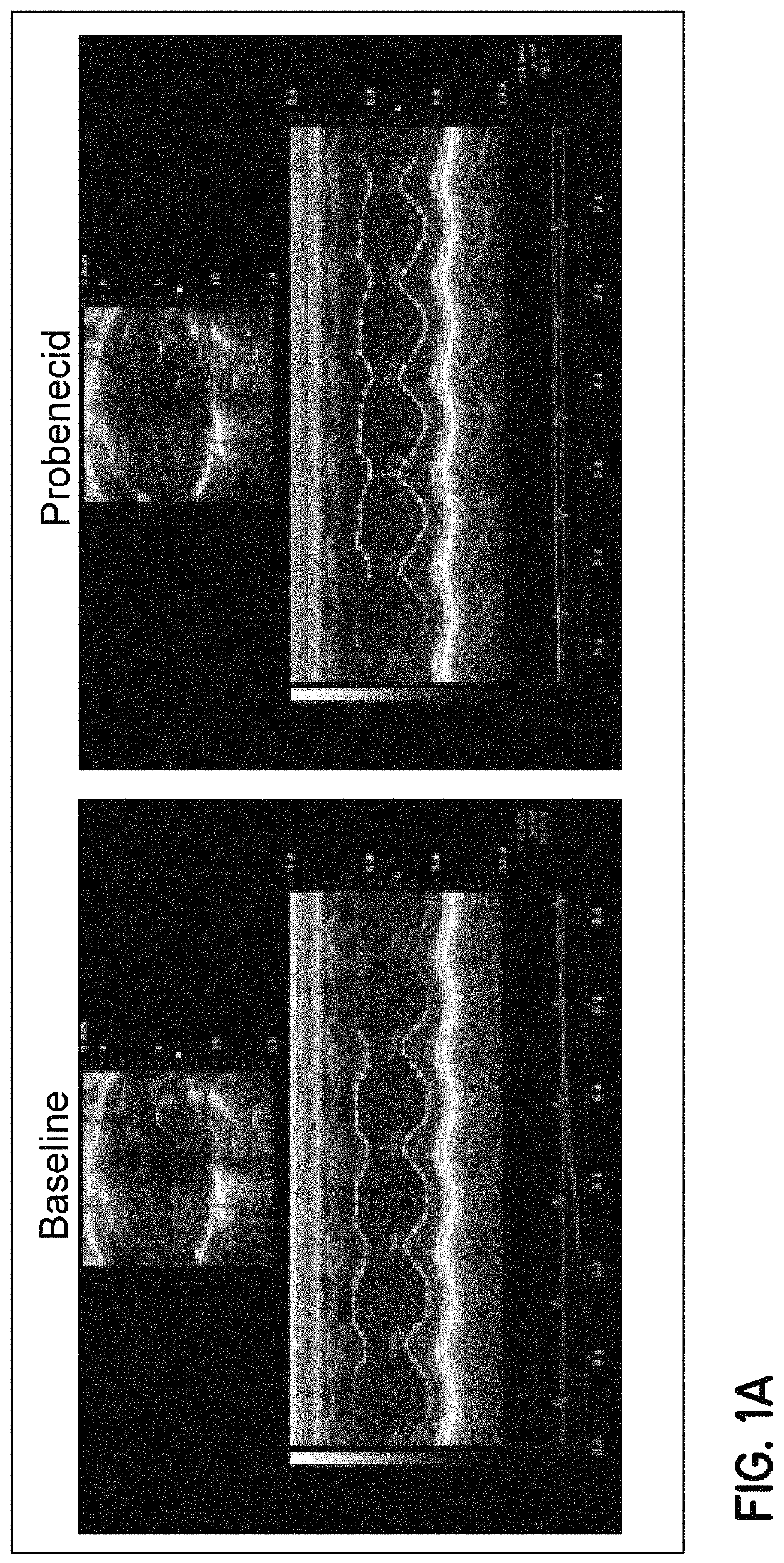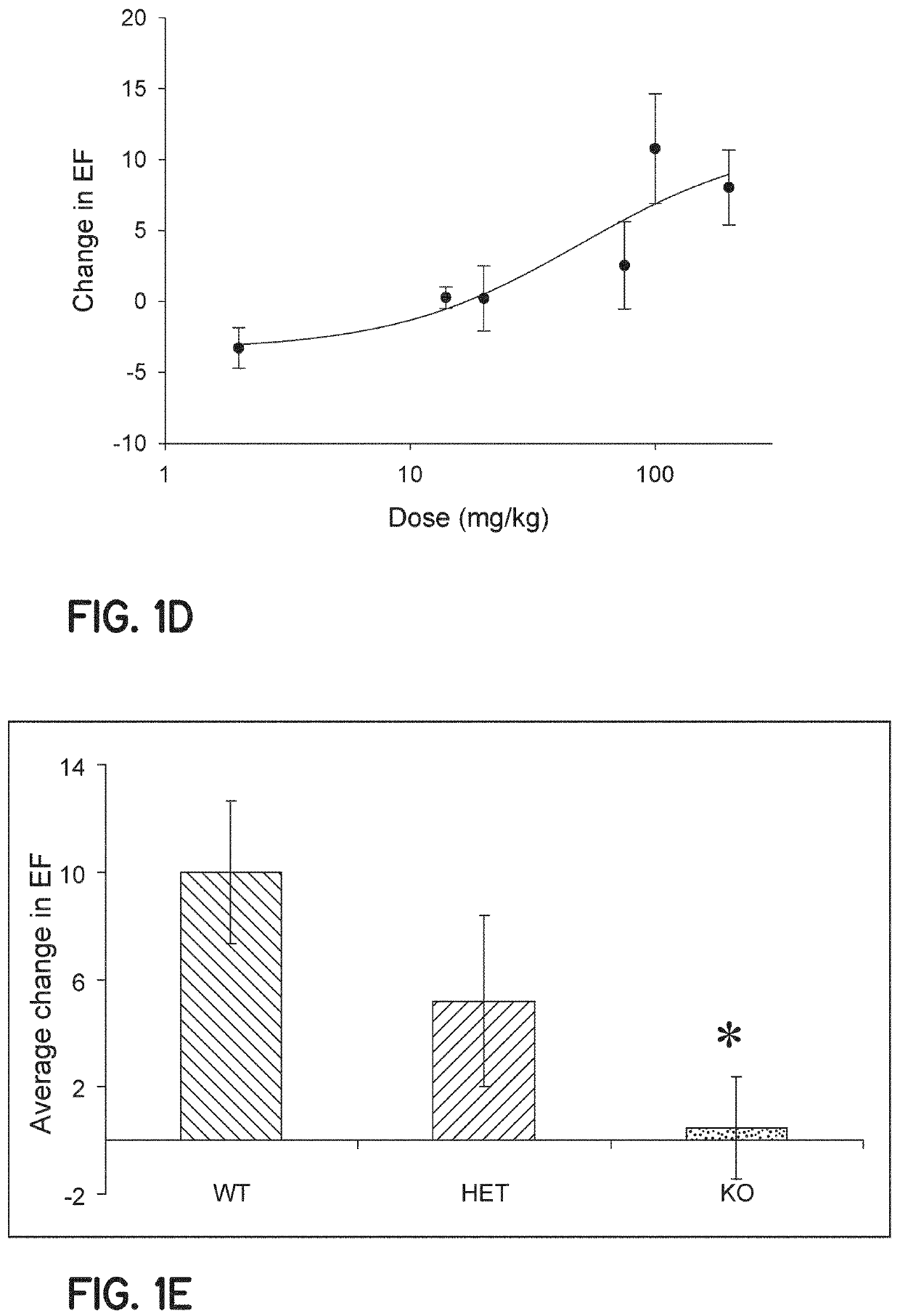Method of treating acute decompensated heart failure with probenecid
a heart failure and probenecid technology, applied in the field of acute decompensated heart failure treatment with probenecid, can solve the problems of limited treatment options for the latter, poor outcomes, and chamber dilation of all cavities of the murine heart, and achieve the improvement of the new york heart association (nyha) classification, cardiac function, and cardiac dysfunction.
- Summary
- Abstract
- Description
- Claims
- Application Information
AI Technical Summary
Benefits of technology
Problems solved by technology
Method used
Image
Examples
example 1
[0081]A survey of murine and human myocardial tissue for expression of TRPV channels established that TRPV2 was the highest of these expressed in whole heart samples and specifically in the left ventricle. The present study investigates the cardiac effects of probenecid on the whole animal, isolated whole heart and the isolated ventricular myocyte to evaluate probenecid's ability to modulate myocardial function.
[0082]Methods
[0083]Animals—Wild type (WT) mice (B6129SF2 / J F2 and C57BL6J, Jackson laboratories) and TRPV2− / − mice (breeding pairs provided by Dr. M. Caterina, John's Hopkins, Baltimore, Md.) were males at 12-16 weeks of age.
[0084]In vivo studies—Studies of contractility with intravenous administration of probenecid.
[0085]Echocardiographic evaluation. In order to obtain a dose response curve, male C57 WT (n=39) mice 12-16 weeks of age were anesthetized with isoflurane while intravenous jugular access (IV) was obtained under a microscope as previously described. Subsequently, ...
example 2
[0120]The data in Example 1 demonstrates that probenecid has positive inotropic properties which were previously not recognized. The data in Example 1 also demonstrates that probenecid does not have significant malignant electrophysiologic properties (i.e no arrhythmias were noted) and hence may be a useful drug for the treatment of heart failure. As other positive inotropes are known to be cell injurious, the data in Example 2 demonstrate the potential cytotoxic / apoptotic properties of probenecid and its potential use as a positive inotrope in a mouse model of ischemic heart disease. These data suggest that probenecid functions through a mechanism separate from conventionally used inotropes, and that it will increase contractility and improve heart function after ischemia without decreasing cell survival or increasing apoptosis. The data were generated in vitro using the HL-1 cardiac cell line in addition to a well-established and clinically relevant mouse model of ischemia / reperfu...
example 3
[0153]Probenecid induces increased intracellular calcium concentrations without an increase in cell death in HL-1 cells in vitro. We confirmed that probenecid increases intracellular calcium and does not damage cardiac cells. This is in contrast to isoproterenol (commonly used beta-agonist) that also increases contractility but clearly results in increased cell death at clinically relevant concentrations. Even at supraphysiological concentrations, probenecid has causes no cell death, and in fact, there is a trend towards enhanced cell survival. We believe this is due to the fact that probenecid nudges the heart by small increases in intracellular calcium without activating pro-cell death pathways. In contrast, isoproterenol causes signaling that both increases calcium levels more drastically, and activates pro-cell death and hypertrophic pathways that are known to be injurious. Assessment of activities of some of these pathways demonstrates that probenecid does not activate β-AR-dep...
PUM
| Property | Measurement | Unit |
|---|---|---|
| concentration | aaaaa | aaaaa |
| centerline frequency | aaaaa | aaaaa |
| depths | aaaaa | aaaaa |
Abstract
Description
Claims
Application Information
 Login to View More
Login to View More - R&D
- Intellectual Property
- Life Sciences
- Materials
- Tech Scout
- Unparalleled Data Quality
- Higher Quality Content
- 60% Fewer Hallucinations
Browse by: Latest US Patents, China's latest patents, Technical Efficacy Thesaurus, Application Domain, Technology Topic, Popular Technical Reports.
© 2025 PatSnap. All rights reserved.Legal|Privacy policy|Modern Slavery Act Transparency Statement|Sitemap|About US| Contact US: help@patsnap.com



